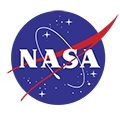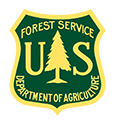NASA Carbon Monitoring System Research Call
*Excerpts cross-posted from NASA.gov*
Science Mission Directorate
NASA Research Announcement
Carbon Monitoring System
Solicitation: NNH20ZDA001N-CMS
NOI/Pre-Application: August 31, 2020
The NASA Carbon Monitoring System (CMS) is a forward-looking initiative designed to make significant contributions to characterizing, quantifying, understanding, and predicting the evolution of global carbon sources, sinks, and fluxes through improved monitoring of terrestrial and aquatic carbon stocks and fluxes. Initially implemented in response to language in NASA’s 2010 Congressional Appropriation, this program is now considered to be an important part of NASA’s Carbon Cycle and Ecosystem focus area, and as presently implemented, supports research and coordinates projects for the development of prototype carbon monitoring systems. Accomplishments-to-date include the development of a continental U.S. terrestrial biomass data product and a global carbon flux product; demonstrations of local- and regional-scale carbon management projects; improvement of the CMS biomass and flux products; refinement and quantification of carbon in tropical peatlands relevant to “blue carbon”; assessing changes in terrestrial-ocean carbon fluxes and investigating global ocean CO2 fluxes; and engagement of carbon monitoring stakeholders to better understand their needs for carbon data and information products. Projects supported by CMS have developed CMS-Flux, one of the most advanced carbon data assimilation systems in the world, which integrates satellite and surface observations related to anthropogenic, oceanic, terrestrial, and atmospheric carbon. For more information about the projects that have been funded through CMS, and relevant links listed on that page (e.g., publications, documents).
NASA requests proposals for investigations that will advance products toward the CMS end goal: development of prototype carbon monitoring systems from an Earth’s system perspective. Areas of interest include terrestrial, atmospheric, and aquatic realms. Proposal emphasis must be directed toward continued development of the established CMS pilot studies, synergistic advancements from past CMS activities, as well as acquisition, quantification, and development of prototype CMS system capabilities that can improve existing and develop new data products toward achieving the levels of precision and accuracy required by current carbon trading activities (e.g., certification of emissions reductions). Successful applicants will also become NASA CMS Science Team (ST) members.
All proposals are required to target a CMS prototyping activity and not focus solely on carbon cycle science research. This requirement will be factored into the relevance criterion evaluation. Proposals that do not address a CMS prototyping activity and clearly show the use of derived remote sensing data will be considered non-responsive and thus may be returned without review.
NASA requests proposals for three types of carbon monitoring prototyping and product development activities. NASA is soliciting:
Studies that address research needs to advance
- Remote sensing-based approaches to quantifying forest degradation and forest regrowth;
- Independent assessment of the accuracy of satellite or airborne remote sensing observations of biomass and carbon stocks; and
- The use of satellite remote sensing as an alternative or a supplement to ground-based methods for quantifying net carbon emissions and/or storage; and
- The accounting of blue carbon ecosystems (quantification and change - e.g. regional/global extent and temporal distribution).
Studies that build upon, extend, evaluate and/or improve the existing CMS products for biomass and flux resulting from NASA’s earlier phases of CMS pilot studies; such studies may include, for example, product improvements, refined characterization and quantification of errors and uncertainties, and/or preparation and delivery of a mature product for long-term archive at an established NASA DAAC or equivalent data center.
Studies using remote sensing data that evaluate and enhance national reported carbon emissions inventories from bottom-up estimates from various sectors of emissions within the United States and have the potential to be applied to reported national inventories from other nations.
Studies that build upon and improve quantification of terrestrial-ocean carbon fluxes in areas that have been subject to considerable perturbations for accounting purposes. Inclusion/delineation of anthropogenic carbon contributionsto existing flux estimates are encouraged. Data from airborne or spaceborne remote sensing is required as a primary research tool in all proposed carbon monitoring investigations. All sources of remotely sensed data must be well justified in terms of their importance and appropriateness for the work to be conducted, as well as their overall utility for monitoring carbon for science, management and policy.
Data from airborne or spaceborne remote sensing is required as a primary research tool in all proposed carbon monitoring investigations. All sources of remotely sensed data must be well justified in terms of their importance and appropriateness for the work to be conducted, as well as their overall utility for monitoring carbon for science, management, and policy.The NASA CMS program continues to emphasize the importance of characterizing and quantifying uncertainties and errors in all CMS products and analyses, and such work must be included in all investigations proposed (see Section 2.2.7).
Proposals must explain the societal relevance of the carbon monitoring activities proposed and provide justification regarding the importance of this work to U.S. national interests in current or potential carbon monitoring for science, management, and policy. Proposals must clearly explain how the proposed work will address stakeholder interests in their studies. Proposers are encouraged to work with stakeholders to better understand stakeholder interests and requirements. Stakeholders are defined as those that utilize products outside the normal scientific research realm.
Of the $10M of Fiscal Year 2021 funding identified for CMS efforts, $5.6M is already allocated to ongoing research commitments from prior years. Therefore, $4.4M in FY 2021 funding is available to support new research under this program element. The number of new awards pending adequate proposals of merit is ~12-16.
CMS research solicitation and additional details for proposals submission.
Links to full research announcement documents.
NASA RESEARCH OPPORTUNITIES IN SPACE AND EARTH SCIENCES–2020 (ROSES-2020).




